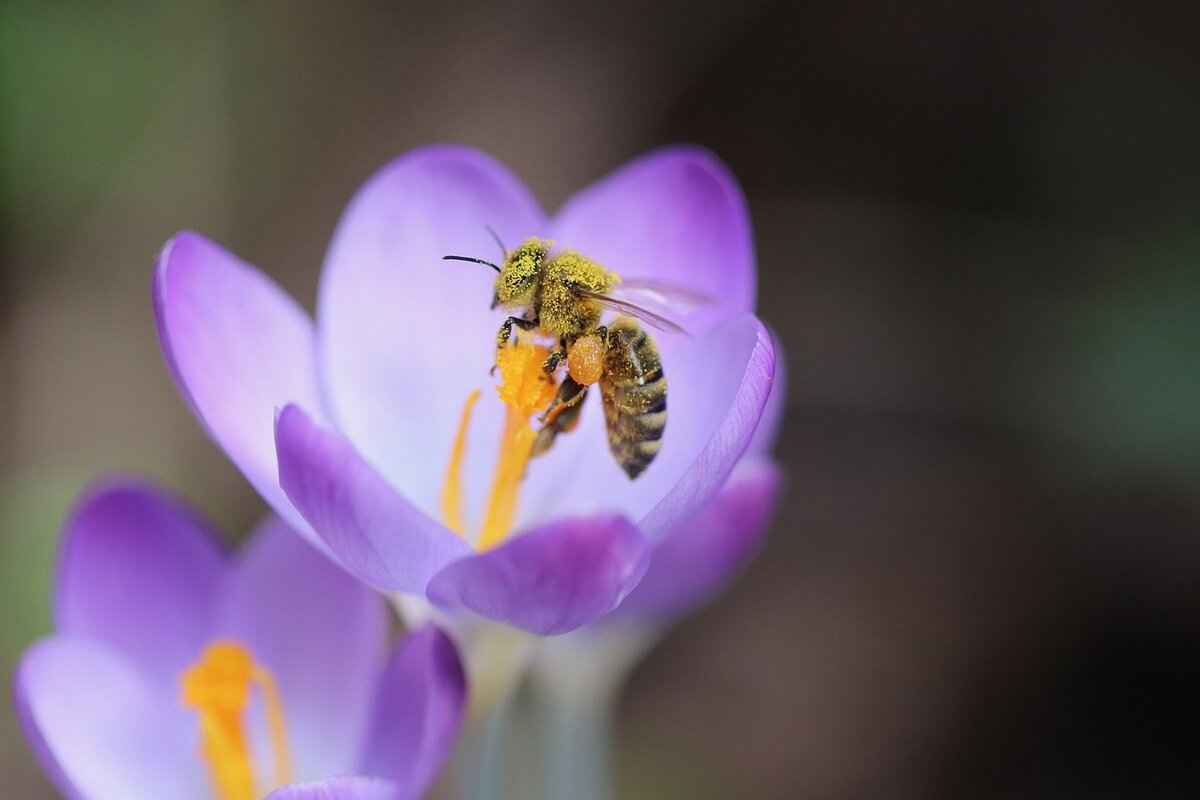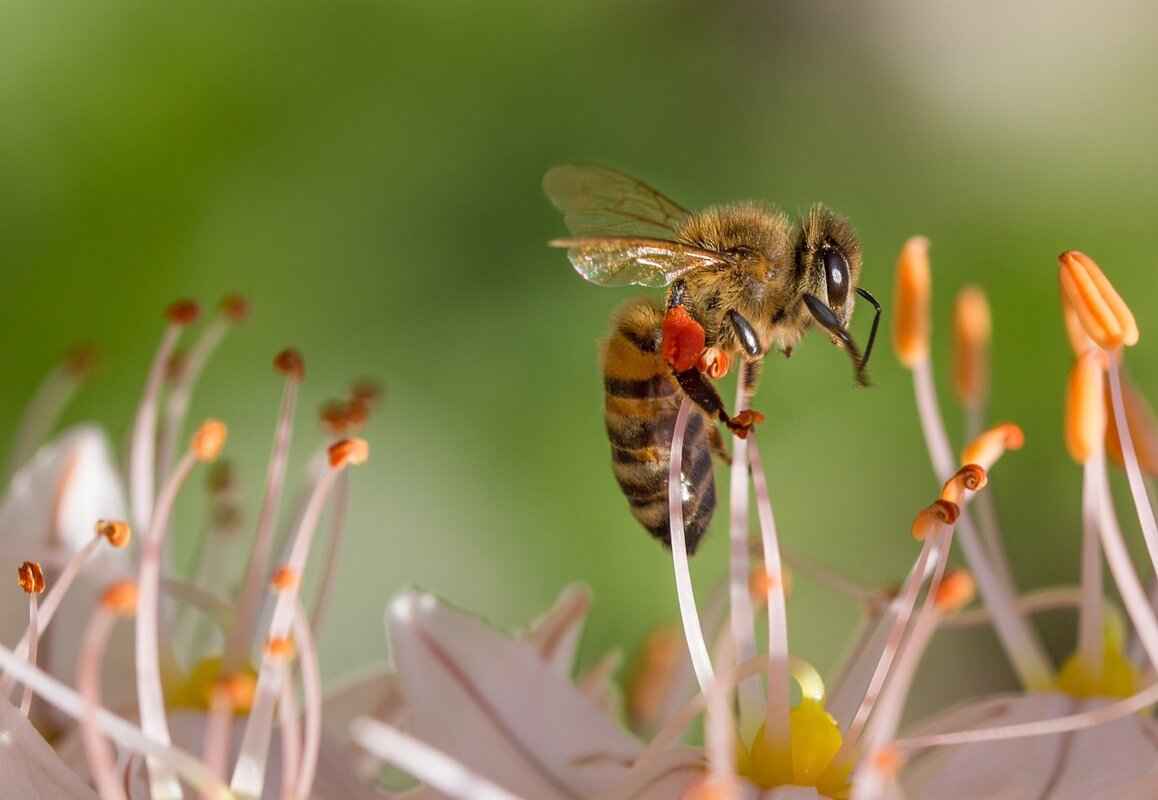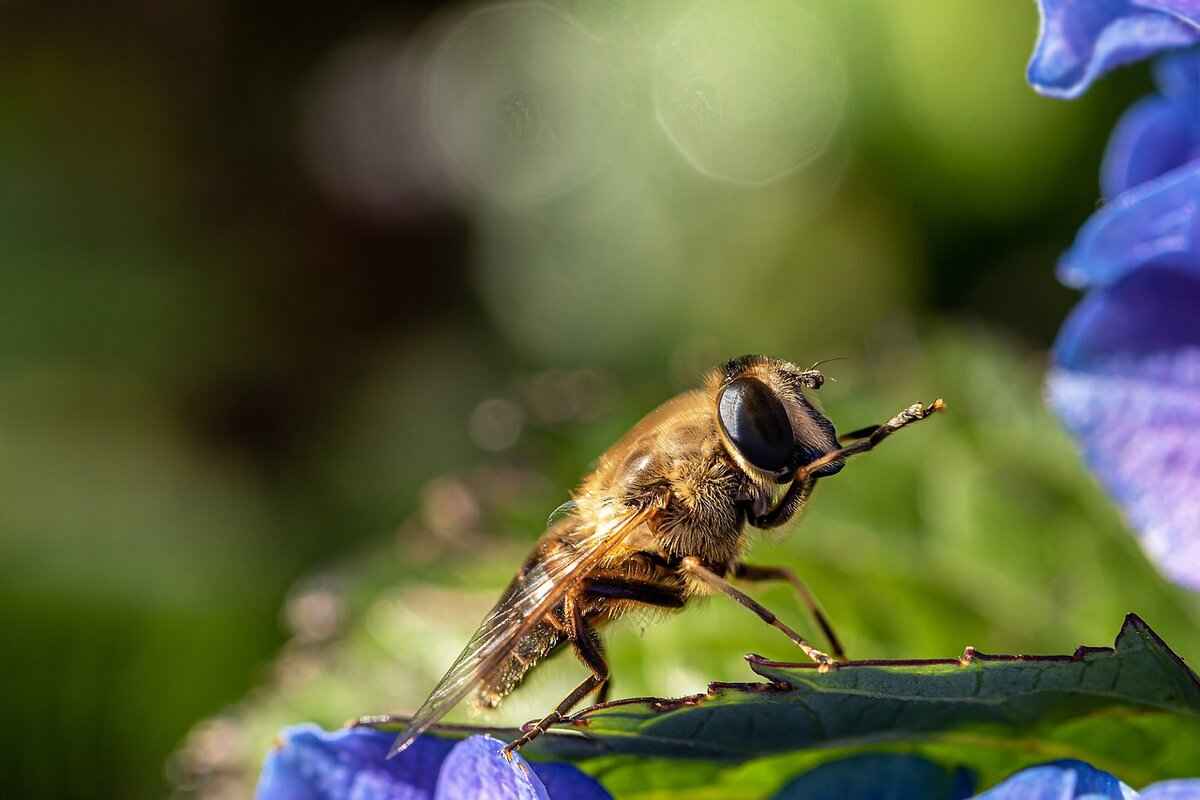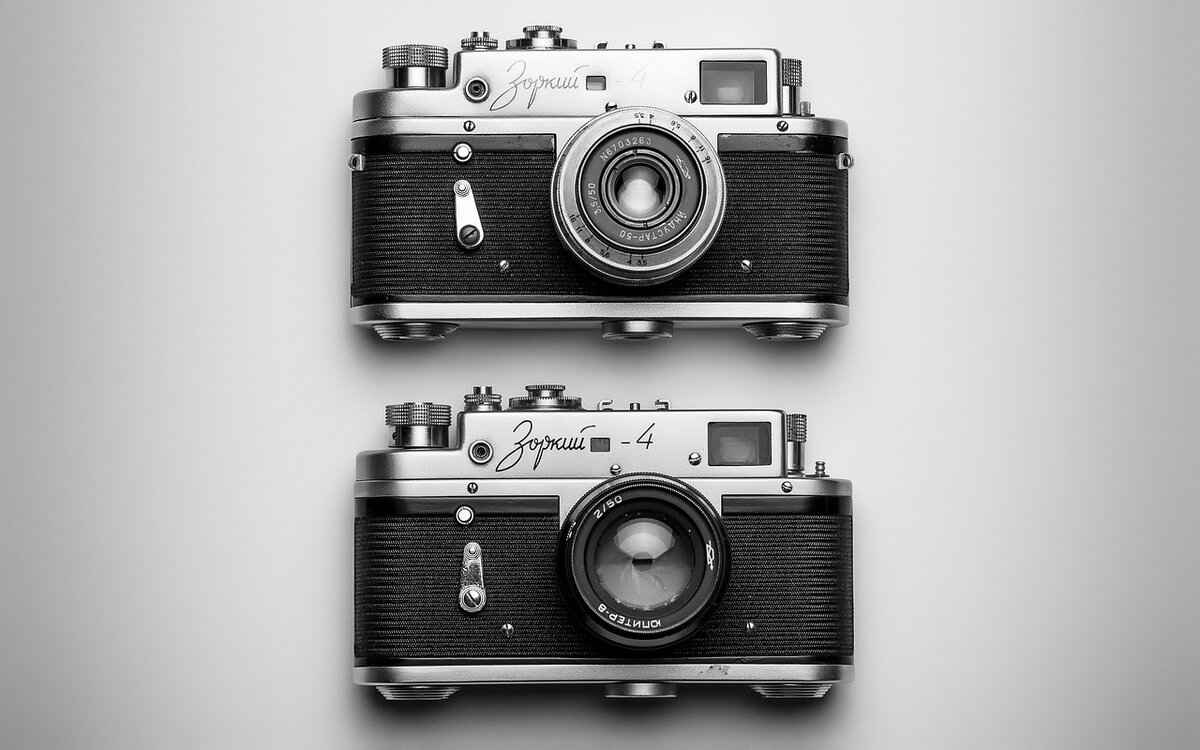This article delves into the best practices for cleaning a nectar collector, ensuring optimal performance and enhancing your overall experience. Discover tips, techniques, and essential information for maintaining your device effectively.
Why Cleaning Your Nectar Collector is Essential
Regular cleaning of your nectar collector is crucial for maintaining its functionality and ensuring a smooth experience. Residue buildup can significantly affect flavor and performance, making cleaning a necessary routine. Over time, resin and other residues can accumulate, leading to unpleasant tastes and diminished airflow. By prioritizing cleanliness, you can enhance the overall experience and ensure that your nectar collector operates at its best.
Materials Needed for Cleaning a Nectar Collector
Before you start cleaning, gather essential materials. Having the right tools and cleaning agents will streamline the process and ensure thorough cleaning without damaging your device. Common materials include:
- Isopropyl alcohol or specialized cleaning solutions
- Pipe cleaners or brushes
- Cotton swabs
- Warm water
- A clean microfiber cloth
Choosing the Right Cleaning Solution
Selecting an appropriate cleaning solution is vital. Options range from isopropyl alcohol to specialized cleaning products designed for glass and silicone, each offering unique benefits for effective cleaning. Isopropyl alcohol is a popular choice due to its ability to dissolve resin and grime effectively. On the other hand, specialized cleaning products often contain ingredients designed to break down sticky residues without harming the material, making them a great alternative.
Essential Tools for Cleaning
Using the right tools can make the cleaning process easier and more effective. Common tools include:
- Pipe Cleaners: Ideal for reaching narrow areas.
- Brushes: Help scrub away stubborn residues.
- Cotton Swabs: Perfect for detailed cleaning in small spaces.
Step-by-Step Guide to Cleaning Your Nectar Collector
A systematic approach to cleaning ensures that no residue is left behind. Follow these steps for thorough cleaning:
Disassembling Your Nectar Collector
Before cleaning, it’s important to disassemble your nectar collector properly. This step allows for a more thorough cleaning of each individual component, ensuring no area is overlooked. Take your time to carefully separate each part to avoid damage.
Soaking the Components
Soaking the components in your chosen cleaning solution helps to loosen stubborn residues. The soaking time may vary depending on the buildup, but generally, 30 minutes is recommended for optimal results. Ensure that all parts are fully submerged for effective cleaning.
Rinsing and Drying Your Nectar Collector
After soaking, rinsing your nectar collector is crucial to remove any remaining cleaning solution and residues. Proper drying is equally important to prevent mold and ensure longevity.
Thorough Rinsing Techniques
Rinsing should be done under warm water to effectively flush out any remaining cleaning agents. Using a gentle flow can help ensure all parts are adequately cleaned without causing damage. Make sure to rinse thoroughly to avoid any lingering tastes.
Effective Drying Methods
Once rinsed, drying your nectar collector is essential. Air drying is recommended, but using a clean microfiber cloth can speed up the process while ensuring no fibers are left behind. Ensure all parts are completely dry before reassembling your device.
Maintaining Your Nectar Collector for Longevity
Regular maintenance can prolong the life of your nectar collector. This section discusses best practices for upkeep and how to prevent excessive buildup between cleanings.
Regular Cleaning Schedule
Establishing a regular cleaning schedule based on usage frequency can help maintain your collector. Cleaning after every few uses can prevent heavy buildup and ensure better performance. Keeping track of your usage will help you determine the best cleaning frequency.
Storage Tips for Your Nectar Collector
Proper storage is essential for maintaining your device’s condition. Keeping it in a clean, dry place away from direct sunlight can help preserve its integrity and performance. Consider using a protective case to prevent accidental damage.

Why Cleaning Your Nectar Collector is Essential
Regular cleaning of your nectar collector is essential for maintaining its functionality and ensuring a smooth experience. Over time, **residue buildup** can significantly affect both flavor and performance, making cleaning a necessary routine for any user.
When you use a nectar collector, the process involves heating the tip and then dipping it into concentrates. This method can lead to a sticky residue accumulating on the device. If left unattended, this residue not only alters the taste of your concentrates but can also hinder the airflow, making it difficult to inhale properly. A clean nectar collector ensures that each session is enjoyable, providing the best flavor and smoothest hits possible.
Moreover, cleaning your nectar collector regularly helps to prevent the growth of bacteria and mold. These microorganisms thrive in warm, moist environments, and a dirty collector can quickly become a breeding ground. By maintaining a consistent cleaning routine, you can avoid potential health risks associated with using unclean devices. This practice is especially important for those who share their nectar collectors with others, as it minimizes the risk of transmitting germs.
Another reason why cleaning is vital is that it prolongs the lifespan of your device. Residue buildup can lead to corrosion and damage over time. By investing a little time into regular maintenance, you can extend the life of your nectar collector and ensure that it remains in optimal condition for as long as possible.
In addition to the practical aspects, a clean nectar collector also contributes to a more enjoyable experience. Users often report that the flavor of their concentrates is noticeably better when using a freshly cleaned device. This enhancement in flavor can elevate your sessions, making them more satisfying and enjoyable.
To summarize, the importance of cleaning your nectar collector cannot be overstated. It not only preserves the functionality and performance of your device but also enhances your overall experience. By establishing a regular cleaning routine, you can enjoy flavorful hits, maintain your health, and prolong the life of your nectar collector.

Materials Needed for Cleaning a Nectar Collector
Before diving into the cleaning process, it is essential to gather all necessary materials. Having the right tools and cleaning agents at your disposal not only streamlines the process but also ensures that your nectar collector is thoroughly cleaned without risking any damage to the device. Here’s a comprehensive list of materials that you should prepare:
- Cleaning Solutions:
- Isopropyl Alcohol: A highly effective cleaner that dissolves resin and grime. It is widely available and affordable, making it a popular choice among users.
- Specialized Cleaning Products: These are formulated specifically for nectar collectors and often contain ingredients that break down sticky residues without harming the material.
- Cleaning Tools:
- Pipe Cleaners: Ideal for reaching into narrow spaces and effectively scrubbing away buildup.
- Soft Brushes: Useful for gentle scrubbing of larger surfaces without scratching the glass or silicone.
- Cotton Swabs: Perfect for detailed cleaning in hard-to-reach areas.
- Soaking Containers:
- Plastic or Glass Containers: Use these to soak the components in your chosen cleaning solution. Ensure they are large enough to hold all parts comfortably.
- Drying Materials:
- Microfiber Cloth: This is ideal for drying your nectar collector without leaving lint or fibers behind.
- Air Drying Rack: A designated space where you can place your cleaned components to air dry completely.
- Protective Gear:
- Gloves: Wearing gloves can protect your hands from harsh cleaning solutions and residues.
- Safety Goggles: If you’re using strong cleaning agents, goggles can protect your eyes from splashes.
Having these materials ready will enhance your cleaning experience and ensure that you can maintain your nectar collector effectively. Remember, the right approach to cleaning not only prolongs the life of your device but also enhances your overall experience. By following the steps outlined in the subsequent sections, you will ensure that your nectar collector is always in optimal condition for use, providing you with the best performance and flavor possible.
When you have everything gathered, you can proceed with confidence, knowing that you are equipped to tackle any residue buildup and maintain your device’s integrity. Each component of your nectar collector plays a role in its performance, and thorough cleaning ensures that every part functions correctly.
In summary, preparing the right materials is the first step in a successful cleaning routine. With these tools and agents at hand, you will be well on your way to enjoying a cleaner, more efficient nectar collector.
Choosing the Right Cleaning Solution
When it comes to maintaining your nectar collector, is essential for optimal performance. The cleaning solution you select can significantly impact the effectiveness of your cleaning routine and the longevity of your device. With a variety of options available, understanding the benefits of each can help you make an informed decision.
Cleaning solutions are designed to break down and remove residues that accumulate over time. These residues can include sticky oils, resin, and other contaminants that affect the flavor and functionality of your nectar collector. Using the right cleaning solution not only ensures a thorough clean but also helps maintain the integrity of your device.
One of the most popular cleaning agents is isopropyl alcohol. This solution is favored for its ability to dissolve tough residues effectively. Here are some key benefits:
- Cost-Effective: Isopropyl alcohol is readily available at most drugstores and is typically inexpensive.
- Fast Acting: It works quickly to break down grime, making the cleaning process efficient.
- Versatile: Suitable for various materials, including glass and silicone, it can be used on different components of your nectar collector.
In addition to isopropyl alcohol, there are numerous specialized cleaning products specifically formulated for nectar collectors. These products often contain unique ingredients designed to tackle sticky residues without damaging the materials. Consider the following:
- Non-Toxic Formulas: Many specialized cleaners are made with safe, non-toxic ingredients, making them a great choice for health-conscious users.
- Enhanced Effectiveness: These products are often designed to target specific types of residues, providing a more thorough clean than general-purpose solutions.
- Ease of Use: Many come in spray bottles or pre-soaked wipes, simplifying the application process.
For those who prefer eco-friendly options, there are natural cleaning solutions available. Ingredients like vinegar and baking soda can be effective in breaking down residues. Here’s why you might consider them:
- Environmentally Friendly: Natural solutions are biodegradable and less harmful to the environment.
- Safe for Health: They are typically free from harsh chemicals, making them safer for users.
- Cost-Effective: Common household items like vinegar and baking soda are inexpensive and readily available.
Ultimately, the best cleaning solution will depend on your specific needs and preferences. Consider factors such as:
- Material Compatibility: Ensure the solution is safe for the materials of your nectar collector.
- Residue Type: Identify the type of residues you commonly encounter to select the most effective cleaning agent.
- Frequency of Use: If you clean your device frequently, a cost-effective option like isopropyl alcohol may be ideal.
In conclusion, selecting the appropriate cleaning solution is vital for maintaining your nectar collector. Whether you opt for isopropyl alcohol, specialized products, or natural alternatives, understanding the benefits and uses of each can help you achieve the best results. By investing in the right cleaning agents, you can enhance your device’s performance and extend its lifespan.
Isopropyl Alcohol: A Powerful Cleaner
Isopropyl alcohol has gained popularity as a go-to cleaning solution for various applications, especially when it comes to maintaining devices like nectar collectors. Its effectiveness in breaking down stubborn residues, such as resin and grime, makes it an essential item in many users’ cleaning kits. This article delves into the reasons behind its widespread use, the benefits it offers, and how to best utilize it for cleaning your nectar collector.
One of the primary reasons isopropyl alcohol is favored is its strong solvent properties. It can effectively dissolve oils, fats, and other sticky substances that accumulate on nectar collectors over time. Unlike some other cleaning agents, isopropyl alcohol evaporates quickly, leaving minimal residue behind. This feature is particularly beneficial for users who want to ensure that their devices are not only clean but also ready for immediate use after cleaning.
Another significant advantage of using isopropyl alcohol is its affordability and availability. It can be easily found in most pharmacies, supermarkets, and online retailers, making it accessible for users everywhere. This cost-effectiveness allows individuals to maintain their nectar collectors without breaking the bank, making it a practical choice for regular cleaning.
- Gather Your Materials: Before you start, ensure you have isopropyl alcohol (preferably 70% or higher), a container for soaking, and cleaning tools like pipe cleaners or brushes.
- Disassemble the Device: Carefully take apart your nectar collector to access all components. This step ensures that every part is thoroughly cleaned.
- Soak the Components: Place the disassembled parts in a container filled with isopropyl alcohol. Allow them to soak for about 30 minutes, which helps to loosen any stubborn residue.
- Scrub and Rinse: After soaking, use a brush or pipe cleaner to scrub the components gently. Rinse them thoroughly under warm water to remove any remaining alcohol and residue.
- Dry Completely: Ensure all parts are completely dry before reassembling your nectar collector. This helps to prevent moisture buildup, which could lead to mold or other issues.
While isopropyl alcohol is effective, it is essential to use it safely. Always work in a well-ventilated area to avoid inhaling fumes. Additionally, keep it away from flames, as it is highly flammable. Wearing gloves can also protect your skin from potential irritation.
While isopropyl alcohol is a powerhouse for cleaning, there are also specialized cleaning products available for nectar collectors. These products are formulated to break down sticky residues without damaging the materials. However, many users still prefer isopropyl alcohol due to its proven effectiveness and ease of use.
In summary, isopropyl alcohol stands out as a powerful cleaning agent for nectar collectors, thanks to its ability to dissolve grime and resin effectively. Its affordability, accessibility, and quick evaporation make it an ideal choice for maintaining your device. By following the proper cleaning techniques and safety precautions, you can ensure that your nectar collector remains in top condition and ready for use.
Specialized Cleaning Products
are essential for maintaining the functionality and longevity of your nectar collector. These products are specifically formulated to tackle the unique challenges presented by the sticky residues often left behind after use. Unlike general-purpose cleaners, specialized solutions are designed to effectively break down these residues without damaging the materials of your device.
When selecting a specialized cleaning product, it is crucial to consider the ingredients. Many of these products contain enzymes and surfactants that work synergistically to dissolve and lift away tough grime. For instance, enzyme-based cleaners can effectively break down organic residues, making them a popular choice among nectar collector users. Additionally, these products are often non-toxic and safe for both glass and silicone components, ensuring that your device remains unharmed during the cleaning process.
Another advantage of using specialized cleaning products is their ease of use. Most come with straightforward instructions that guide you through the cleaning process, making it accessible even for those who may not be familiar with cleaning techniques. Typically, you would apply the cleaner, let it sit for a specified period, and then rinse thoroughly. This simplicity can save you time and effort, allowing you to enjoy your nectar collector without the hassle of complicated cleaning routines.
Furthermore, many specialized cleaning products are formulated to leave behind a protective layer that can help prevent future residue buildup. This feature is particularly beneficial for regular users, as it can significantly extend the intervals between cleanings. By investing in a quality cleaning product, you not only enhance the immediate performance of your nectar collector but also contribute to its long-term maintenance.
It is important to note that while specialized cleaning products are effective, they should be used in conjunction with other cleaning tools for optimal results. Items such as pipe cleaners, brushes, and cotton swabs can help reach those hard-to-clean areas and ensure that every component of your nectar collector is thoroughly cleaned.
In summary, utilizing specialized cleaning products is a vital step in maintaining your nectar collector. These products are designed to address specific cleaning challenges, providing effective solutions that protect your device while enhancing its performance. By incorporating these cleaners into your regular maintenance routine, you can ensure a better experience every time you use your nectar collector.
Essential Tools for Cleaning
Cleaning your nectar collector effectively requires the right tools. Each tool serves a specific purpose, making the process more efficient and ensuring that every nook and cranny is addressed. Below, we explore some of the most common and effective tools you should consider using in your cleaning routine.
- Pipe Cleaners: These flexible, slender tools are excellent for reaching tight spaces within your nectar collector. Their ability to bend allows you to scrub hard-to-reach areas, ensuring that no residue is left behind. Pipe cleaners can effectively remove stubborn buildup, particularly in narrow passages.
- Brushes: Various types of brushes can be used, including bristle brushes and silicone brushes. Bristle brushes are ideal for scrubbing surfaces, while silicone brushes are gentle enough to avoid scratching delicate materials. Using a brush can help dislodge sticky residue that might otherwise be challenging to clean.
- Cotton Swabs: These small, precise tools are perfect for detailed cleaning tasks. Cotton swabs can be used to clean intricate designs or small openings in your nectar collector. Their size allows for targeted cleaning, making them indispensable for maintaining the aesthetic and functional aspects of your device.
- Microfiber Cloths: After cleaning, using a microfiber cloth can help ensure that your nectar collector is free from lint and fibers. These cloths are soft and absorbent, making them perfect for drying and polishing your device without causing scratches.
- Cleaning Solution: While not a tool in the traditional sense, having the right cleaning solution is essential. Solutions like isopropyl alcohol or specialized cleaning products designed for glass and silicone can break down sticky residues effectively. Be sure to choose a product that is safe for the materials of your nectar collector.
Using the right combination of tools can significantly enhance your cleaning routine. Each tool has its strengths, and together they create a comprehensive cleaning strategy that ensures your nectar collector remains in top condition. Regular maintenance using these tools will not only improve the performance of your device but also extend its lifespan.
When selecting tools, consider the materials of your nectar collector and choose those that are compatible. For example, avoid abrasive tools on delicate glass surfaces to prevent scratches. Investing in quality cleaning tools can make a noticeable difference in your overall experience, allowing you to enjoy the full flavor and functionality of your nectar collector.
In summary, the right tools are essential for effective cleaning. By incorporating pipe cleaners, brushes, cotton swabs, microfiber cloths, and suitable cleaning solutions into your routine, you can ensure that your nectar collector operates at its best. Regular cleaning not only enhances performance but also contributes to a more enjoyable experience, making it a worthwhile investment for any user.

Step-by-Step Guide to Cleaning Your Nectar Collector
A systematic approach to cleaning your nectar collector is essential for ensuring optimal performance and longevity. This guide will provide you with a detailed, step-by-step process that breaks down the cleaning procedure into manageable tasks, ensuring that no residue is left behind.
- Gather Your Materials: Before you begin, collect all necessary cleaning supplies. Essential items include:
- Isopropyl alcohol (at least 90% concentration)
- Specialized cleaning solutions
- Pipe cleaners
- Soft brushes
- Cotton swabs
- Warm water
- A clean microfiber cloth
- Disassemble Your Nectar Collector: Carefully take apart your nectar collector. This step is crucial as it allows you to clean each component thoroughly. Make sure to keep track of all parts to avoid losing anything.
- Soak the Components: Place the disassembled parts into a container filled with your chosen cleaning solution. Allow them to soak for about 30 minutes. This soaking time helps to break down any stubborn residue that may have built up.
- Scrub Each Component: After soaking, use a soft brush or pipe cleaner to scrub each piece gently. Pay special attention to areas where residue tends to accumulate. For hard-to-reach spots, cotton swabs can be very effective.
- Rinse Thoroughly: Rinse each component under warm running water. This step is critical to remove any remaining cleaning solution and loosened residues. Ensure that no cleaning agents are left behind, as they can affect the taste during use.
- Drying Your Nectar Collector: After rinsing, it’s important to dry each part thoroughly. You can air dry the components, but using a clean microfiber cloth can expedite the process. Ensure that no fibers are left behind, as these can interfere with your experience.
- Reassemble Your Nectar Collector: Once all parts are completely dry, carefully reassemble your nectar collector. Ensure that everything fits properly and is secure before using it again.
- Regular Maintenance: Establish a regular cleaning schedule based on your usage frequency. Cleaning after every few uses can prevent heavy buildup and ensure better performance. This proactive approach will help maintain the quality of your nectar collector.
By following this step-by-step guide, you can ensure that your nectar collector remains in excellent condition, providing you with the best possible experience every time you use it. Regular cleaning not only enhances performance but also prolongs the lifespan of your device.
Disassembling Your Nectar Collector
Before embarking on the cleaning journey of your nectar collector, it is crucial to disassemble the device properly. This initial step is not merely a formality; it is essential for ensuring that each component is thoroughly cleaned and maintained. A well-disassembled nectar collector allows you to reach every nook and cranny, preventing any residual buildup that could affect performance and flavor.
To begin the disassembly process, first ensure that your nectar collector is cool to the touch. If it has been recently used, give it adequate time to cool down. This is particularly important for glass nectar collectors, as sudden temperature changes can lead to breakage.
- Step 1: Remove the Tip – The tip of the nectar collector is where most residue accumulates. Gently twist or pull it away from the body of the collector. If it feels stuck, avoid using excessive force, as this could damage the device.
- Step 2: Detach the Body – Depending on the design, the body of the nectar collector may be a single piece or consist of multiple segments. If it is segmented, carefully pull apart each section. Ensure you are holding the device firmly to avoid any accidental slips.
- Step 3: Remove Any Attachments – Some nectar collectors come with additional features like percolators or attachments. If your device includes these, make sure to detach them as well, as they require individual attention during cleaning.
Once disassembled, you will have access to all parts of the nectar collector. This is the perfect opportunity to inspect each component for any signs of wear or damage. Look for cracks, chips, or any other issues that may affect the functionality of your device.
Moreover, disassembling your nectar collector allows you to clean each piece using the appropriate methods and cleaning solutions. For example, glass components can be soaked in isopropyl alcohol or specialized cleaning solutions, while silicone parts may require a gentler approach to avoid degradation.
In addition to enhancing the cleaning process, disassembly also promotes better maintenance practices. By routinely disassembling your nectar collector, you can ensure that it remains in optimal condition, leading to a more enjoyable experience each time you use it. Remember, a clean and well-maintained nectar collector not only improves flavor but also extends the lifespan of your device.
In summary, taking the time to properly disassemble your nectar collector is a vital step in the cleaning process. It ensures that every component is effectively cleaned and inspected, ultimately leading to better performance and a superior user experience.
Soaking the Components
Soaking the components of your nectar collector is a vital step in the cleaning process, as it effectively loosens stubborn residues that can accumulate over time. When you soak the various parts in your chosen cleaning solution, you allow the solution to penetrate and break down the buildup, making it easier to clean.
- Recommended Soaking Time: The soaking time may vary depending on the extent of the buildup. Generally, a soaking period of 30 minutes is recommended for optimal results. This duration allows the cleaning solution to work effectively, ensuring that all residues are loosened.
- Factors Affecting Soaking Time: The type of residue, the material of the nectar collector, and the cleaning solution used can all influence soaking time. For instance, if you notice that the residue is particularly stubborn, you may want to extend the soaking time to 45 minutes or even longer, while keeping an eye on the components to prevent any potential damage.
Choosing the Right Cleaning Solution
The effectiveness of the soaking process largely depends on the cleaning solution you choose. Here are some popular options:
- Isopropyl Alcohol: This is a common choice due to its powerful solvent properties. It can dissolve sticky residues and is readily available at most stores.
- Specialized Cleaning Products: There are various products specifically designed for cleaning nectar collectors. These often contain ingredients that target sticky residues without damaging the material of your device.
How to Soak the Components
To ensure a thorough soak, follow these steps:
- Disassemble Your Nectar Collector: Carefully take apart your nectar collector, separating all components. This allows each piece to soak individually, maximizing the cleaning effectiveness.
- Prepare the Cleaning Solution: Mix your chosen cleaning solution according to the manufacturer’s instructions. If using isopropyl alcohol, a concentration of 70% or higher is ideal.
- Submerge the Components: Place the disassembled parts into a container filled with the cleaning solution. Ensure that all pieces are fully submerged to allow for even soaking.
- Let It Soak: Allow the components to soak for the recommended time. During this period, you can gently agitate the solution to help dislodge any stubborn residues.
Post-Soaking Tips
After the soaking period, it’s essential to rinse the components thoroughly. Use warm water to flush out any remaining cleaning solution and loosened debris. A gentle stream of water will help ensure that all residues are washed away without damaging the components.
In summary, soaking your nectar collector components is a straightforward yet highly effective cleaning method. By following the recommended soaking times and using the right cleaning solutions, you can maintain your device’s performance and prolong its lifespan. Regular cleaning not only enhances the flavor of your experience but also ensures that your nectar collector remains in optimal condition for future use.

Rinsing and Drying Your Nectar Collector
After soaking your nectar collector, the rinsing process is a critical step that should not be overlooked. Proper rinsing helps in eliminating any lingering cleaning solutions or residues that could affect the flavor and overall experience of using your device. This section will detail effective rinsing techniques and drying methods to ensure your nectar collector remains in optimal condition.
To effectively rinse your nectar collector, start by using warm water. This temperature helps to dissolve any remaining cleaning agents, ensuring a thorough cleanse. Here are some tips for effective rinsing:
- Use a Gentle Flow: When rinsing, direct a gentle stream of warm water into the collector. This technique helps to dislodge any stubborn residues without damaging the delicate components.
- Rotate and Shake: While rinsing, gently rotate and shake the collector to ensure that water reaches all areas. This method is particularly useful for intricate designs or hard-to-reach spots.
- Check for Residues: After rinsing, inspect the collector for any remaining residues. If necessary, repeat the rinsing process until the water runs clear and free of any bubbles or foam.
Once the rinsing is complete, the next step is to dry your nectar collector properly. This step is vital to prevent mold growth and ensure the longevity of your device. Here are some effective drying methods:
- Air Drying: Place the nectar collector upside down on a clean, dry towel or drying rack. Allow it to air dry completely. This method is the safest, as it prevents any potential scratches or damage that could occur from using cloths.
- Microfiber Cloth: If you need to expedite the drying process, use a clean microfiber cloth. Gently wipe the exterior and interior surfaces, being careful not to leave any fibers behind.
- Avoid Direct Sunlight: When drying, keep your nectar collector away from direct sunlight, as this could lead to warping or discoloration of materials over time.
In conclusion, rinsing and drying your nectar collector are essential steps in the cleaning process. By following these techniques, you can ensure that your device remains in excellent condition, providing you with a superior experience every time you use it. Regular maintenance, including proper rinsing and drying, will not only enhance performance but also extend the life of your nectar collector.
Thorough Rinsing Techniques
When it comes to cleaning your nectar collector, thorough rinsing is a critical step that should not be overlooked. This process ensures that all cleaning agents and residues are completely removed, allowing your device to perform at its best. In this section, we will delve into the importance of rinsing, the best techniques to use, and tips for ensuring a thorough clean.
After soaking your nectar collector in a cleaning solution, rinsing it properly is essential. If any cleaning agents are left behind, they can affect the flavor of your concentrates and even pose health risks. Rinsing not only helps in removing these chemicals but also ensures that any remaining residue from previous uses is flushed out. This step is vital for maintaining the integrity and performance of your device.
- Use Warm Water: Rinsing your nectar collector under warm water is highly recommended. Warm water can effectively dissolve and wash away any remaining cleaning agents, making the rinsing process more efficient.
- Gentle Flow: Utilize a gentle flow of water to avoid damaging delicate parts of your nectar collector. A harsh stream can cause cracks or breakage, particularly in glass components.
- Complete Coverage: Ensure that all parts of the nectar collector are rinsed thoroughly. Pay special attention to areas that may trap residue, such as joints and crevices.
To maximize the effectiveness of your rinsing, consider the following techniques:
1. Start by disassembling your nectar collector into its individual parts.2. Rinse each component under warm water, ensuring that the flow is gentle.3. Rotate and move the parts to allow water to reach all surfaces.4. For any stubborn areas, consider using a soft brush while rinsing to dislodge any remaining residue.5. After rinsing, inspect each component to ensure no cleaning solution or residue remains.
Once you have rinsed your nectar collector, it is crucial to dry it properly to prevent mold and ensure longevity. Consider air drying the components in a clean area or using a soft microfiber cloth to gently pat them dry. Avoid using paper towels, as they can leave fibers behind.
In summary, thorough rinsing is a pivotal part of the cleaning process for your nectar collector. By following the proper techniques and ensuring that all cleaning agents are removed, you can maintain the performance and flavor integrity of your device. Regular attention to this detail will enhance your overall experience and prolong the life of your nectar collector.
Effective Drying Methods
When it comes to maintaining the performance of your nectar collector, drying is an often overlooked yet crucial step. After rinsing, ensuring that your device is completely dry prevents the growth of mold and mildew, which can compromise both the flavor and safety of your experience. Here are some effective drying methods to consider:
- Air Drying: This is the most straightforward method and involves simply leaving your nectar collector in a well-ventilated area. Place it upside down on a clean, dry towel to allow gravity to assist in removing any residual water. Ensure the area is free from dust or contaminants that could settle on the device as it dries.
- Microfiber Cloth: Utilizing a clean microfiber cloth can significantly speed up the drying process. These cloths are designed to absorb moisture without leaving any fibers behind, which is essential for maintaining the clarity and integrity of your nectar collector. Gently wipe down all surfaces, paying special attention to crevices where water may linger.
- Drying Rack: If you have multiple components or several nectar collectors to dry, consider using a drying rack. This allows for optimal airflow around each piece, promoting quicker drying times. Ensure the rack is clean and placed in a space with good ventilation.
- Use of a Fan: For those who prefer a quicker method, using a small fan can expedite the drying process. Position the fan to blow air across the nectar collector, which helps evaporate any remaining moisture. Just be cautious not to direct the airflow too forcefully as this could cause the device to tip over.
- Sunlight Exposure: Placing your nectar collector in indirect sunlight can also aid in drying. The warmth from the sun promotes evaporation, but be cautious of prolonged exposure as excessive heat can damage some materials.
Considerations for Effective Drying
When drying your nectar collector, there are a few important considerations to keep in mind:
- Avoid Heat Sources: While it might be tempting to use a hairdryer or other heat sources to speed up drying, these can warp or damage the materials of your nectar collector. Always opt for natural methods or gentle airflow.
- Inspect for Residues: After drying, inspect your nectar collector for any remaining residues or moisture. If any are found, it may be necessary to rinse and dry again to ensure a thorough clean.
- Storage After Drying: Once your nectar collector is completely dry, store it in a clean, dry place away from direct sunlight. This will help maintain its condition and prevent any dust or contaminants from settling on it.
In conclusion, effective drying methods play a vital role in the maintenance of your nectar collector. By employing the right techniques and tools, you can ensure that your device remains in optimal condition, ready for your next use. Remember, a clean and well-maintained nectar collector not only enhances your experience but also prolongs the life of your device.

Maintaining Your Nectar Collector for Longevity
Regular maintenance is essential for extending the life of your nectar collector, ensuring it performs optimally and provides a pleasant experience each time you use it. This section covers best practices for upkeep, helping you prevent excessive buildup and maintain your device’s integrity.
- Establish a Cleaning Routine: Create a consistent cleaning schedule based on your usage. For heavy users, a weekly cleaning may be necessary, while occasional users might find bi-weekly or monthly cleanings sufficient. Consistency helps prevent the buildup of residues that can affect flavor and performance.
- Use Quality Cleaning Solutions: Invest in high-quality cleaning solutions specifically designed for nectar collectors. These products are formulated to break down sticky residues without damaging your device. Options include isopropyl alcohol and specialized cleaners that are safe for glass and silicone.
- Thoroughly Clean After Each Use: After using your nectar collector, rinse it with warm water immediately. This simple step helps prevent the hardening of residues, making future cleanings easier. Consider using a gentle brush or pipe cleaner to remove any remaining particles.
- Inspect for Damage: Regularly check your nectar collector for any signs of wear or damage. Look for cracks, chips, or discoloration, as these can affect performance. Addressing minor issues promptly can prevent larger problems down the line.
Storage Tips for Your Nectar Collector
Proper storage is crucial for maintaining your nectar collector’s longevity. Follow these guidelines to ensure your device remains in optimal condition:
- Store in a Safe Location: Keep your nectar collector in a designated area where it won’t be knocked over or damaged. A padded case or a soft bag can provide additional protection.
- Avoid Direct Sunlight: Prolonged exposure to sunlight can weaken materials and cause discoloration. Store your nectar collector in a cool, dark place to preserve its integrity.
- Keep It Clean: Before storing, ensure your nectar collector is clean and dry. Residues left in the device can lead to unwanted odors or mold growth during storage.
Preventing Excessive Buildup
To avoid excessive buildup between cleanings, consider the following tips:
- Limit Use of Sticky Substances: If possible, avoid using overly sticky concentrates that are difficult to clean. Opt for cleaner alternatives that leave less residue.
- Use a Screen or Filter: Installing a screen or filter can help catch larger particles and prevent them from settling in your nectar collector, making cleaning easier.
- Educate Yourself: Stay informed about the best practices for using and maintaining your nectar collector. Knowledge of proper techniques can significantly enhance your experience and prolong the life of your device.
By following these maintenance tips and practices, you can ensure that your nectar collector remains in excellent condition, providing you with enjoyable sessions for years to come.
Regular Cleaning Schedule
Establishing a for your nectar collector is essential for maintaining its performance and ensuring a satisfying experience. Just like any other device, neglecting to clean your nectar collector can lead to a buildup of residue, which can negatively impact its functionality and the quality of your sessions. Here, we will discuss how to create an effective cleaning schedule based on your usage frequency, the benefits of regular maintenance, and some practical tips to keep your collector in top shape.
Understanding Usage Frequency
The first step in developing a cleaning schedule is to assess how often you use your nectar collector. If you use it daily, a cleaning routine after every few uses is advisable. For less frequent users, cleaning after every five to ten uses may suffice. Regardless of your usage frequency, the goal is to prevent heavy buildup, which can be more challenging to clean and may affect the flavor of your concentrates.
Benefits of Regular Cleaning
A consistent cleaning schedule provides numerous benefits, including:
- Improved Flavor: Regular cleaning removes residues that can alter the taste of your concentrates, ensuring a pure and enjoyable experience.
- Enhanced Performance: A clean nectar collector functions more efficiently, allowing for smoother draws and better vapor production.
- Longevity: By preventing excessive buildup, you can extend the lifespan of your device, saving you money in the long run.
Creating Your Cleaning Routine
To establish a practical cleaning routine, consider the following steps:
- Set a Reminder: Use your phone or a calendar to remind you when it’s time to clean your nectar collector. This can be particularly helpful if you tend to forget.
- Keep Cleaning Supplies Handy: Store your cleaning materials, such as isopropyl alcohol, brushes, and cotton swabs, in a designated area. This makes it easier to clean whenever necessary.
- Assess After Each Use: After every session, take a moment to check for any visible residue. If you notice any buildup, it’s time to clean.
Implementing the Schedule
Once you have determined your cleaning frequency, stick to your schedule as closely as possible. Consistency is key to maintaining your nectar collector’s performance. If you find that your current schedule isn’t working, don’t hesitate to adjust it based on your usage patterns.
In conclusion, a well-planned cleaning schedule tailored to your usage frequency is vital for keeping your nectar collector in excellent condition. By prioritizing regular maintenance, you can enhance your overall experience, ensuring that each session is as enjoyable as the last. Remember, a clean device is a happy device!
Storage Tips for Your Nectar Collector
Proper storage is crucial for the longevity and functionality of your nectar collector. By following some simple yet effective practices, you can ensure that your device remains in excellent condition, ready for use whenever you need it. Here are some essential tips to help you store your nectar collector properly:
- Choose the Right Location: Always store your nectar collector in a clean and dry environment. Avoid areas that are prone to humidity or moisture, as these can lead to mold and deterioration of materials.
- Avoid Direct Sunlight: Exposure to direct sunlight can cause the materials of your nectar collector, especially if it’s made of glass or silicone, to degrade over time. Store it in a shaded area or in a container that blocks out light.
- Use Protective Cases: Investing in a protective case designed specifically for nectar collectors can add an extra layer of security. These cases can prevent accidental drops and keep dust and debris away.
- Keep Away from Heat Sources: Storing your nectar collector near heat sources, such as heaters or stoves, can warp or damage the materials. Ensure that the storage area maintains a stable temperature.
- Organize Your Accessories: If you have accessories like dab tools or cleaning supplies, consider using a dedicated organizer. This will not only keep your storage area tidy but also make it easier to find everything you need when you want to use your collector.
- Regular Inspection: Periodically check your stored nectar collector for any signs of wear or damage. Early detection can prevent more significant issues down the line.
By implementing these storage tips, you can significantly enhance the lifespan of your nectar collector. Proper storage not only protects your investment but also ensures that your device remains functional and ready for optimal performance. Remember, taking a few extra minutes to store your nectar collector correctly can save you from potential headaches in the future.
In addition to these tips, always remember to clean your nectar collector regularly. A clean device stored properly will provide a better experience and maintain the flavors you enjoy. Following these practices will help you enjoy your nectar collector for years to come.
Frequently Asked Questions
- How often should I clean my nectar collector?
It’s best to clean your nectar collector after every few uses. This prevents heavy residue buildup and ensures a smoother experience every time you use it.
- What cleaning solutions are safe for my nectar collector?
You can use isopropyl alcohol or specialized cleaning products designed for glass and silicone. These options effectively break down sticky residues without damaging your device.
- Can I use regular soap and water to clean my nectar collector?
While soap and water can help, they might not be as effective at removing stubborn resin. For the best results, stick to isopropyl alcohol or specialized cleaners.
- Is it necessary to disassemble my nectar collector before cleaning?
Yes, disassembling your nectar collector allows for a more thorough cleaning of each component, ensuring no residue is left behind.
- How should I dry my nectar collector after cleaning?
Air drying is recommended, but using a clean microfiber cloth can speed up the process. Just be sure no fibers are left behind!














